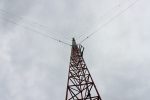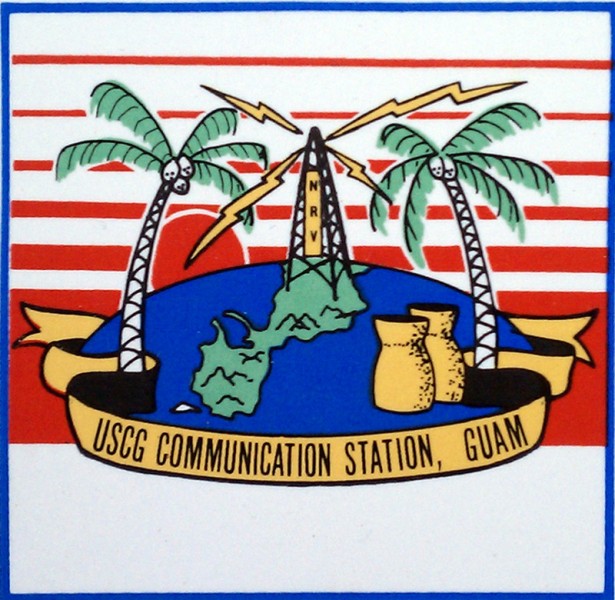I have been working on an AM station lately. WBNR signed on in 1959 and follows the now familiar AM trajectory; after making bank in the ’60s, ’70s, and ’80s, revenue declined, maintenance deferred, yada, yada, yada…
After a stint with a news-talk format, the station changed to “Real Country,” a few years ago. WAT! Music on the AM? Actually, it is doing quite well. The perception is that AM sounds terrible and nobody listens to it. The stock AM radio in my Subaru (made by Pioneer) sounds pretty good on AM. I have noticed that when I first tune a station in, it sounds narrow-banded, slightly better than a telephone. However, after a second or two, the bandwidth opens up and it can sound quite good. I have also heard this station playing at several local businesses. When we turn it off to do maintenance, the phone starts ringing. Clearly, somebody is listening…
This station is part of a three-station simulcast. The AM station to the north got rid of its directional antenna and added an FM translator a few years ago. That has made a big difference. Thus a translator was acquired for this station as well.
The translator was held up by an informal objection filed by Prometheus, Et. Al. as part of a blanket filing against all new translator licenses by the LPFM advocate. In any case, the Construction Permit has been on hand for a while, so the owner felt it was time to move forward with building out the new FM signal.

Installing the single-bay Shively 6812 antenna on the side of one of the nighttime towers triggered some other things. A bit of the deferred maintenance was addressed; new stockade fences around all the towers replaced the original fences put up in 1988. Those original fences were falling down.

The antenna system for WBNR is actually quite elegant, perhaps even beautiful. A simple two-tower system for the daytime array and a separate two-tower system for the nighttime array. The nighttime towers are top-loaded, adding about 30.7 degrees in electrical height.

The CP for the translator required some extra steps because of the mounting on the night tower of the AM array. Before and after impedance measurements need to be taken on the tower in question. Another requirement of the CP, is a set of before and after monitor points need to be taken.

While I was measuring the base impedance, I decided to measure all the towers instead of just the nighttime tower that has the translator antenna mounted on it. This is a good point of reference if any problems arise in the future. Often, this information can be found in the technical paperwork from the original license application. Those files can be a treasure trove of information. Unfortunately, it appears that a good portion of the original paperwork is missing.

The Phasor and ATUs are a late 80’s Harris product. They are actually in remarkable shape, all things considered. All of the RF contactors are Harris HS-4P motor-driven units. They are rated at 30 Amps, RF-RMS. I don’t think that they are supported by GatesAir. I have a small stock of spare finger stock and contact bars. I suppose, if I had to, I could make or adapt parts to repair.
Looking at the base currents and the base current ratios for both the day and night patterns (base current ratios are on the station license), the tower impedance has changed very little over thirty years. That is good news, especially with those 215-degree-tall nighttime towers.
The WBNR license application did contain an overall system diagram showing the Phasor and all the ATUs. It did not contain any component ids or other information. I scanned that in, created a vector graphics file, and expanded it to a 24 x 36 inch size. I was able to fit all the component values and other information on the diagram.

The other issue is the monitor point descriptions. They include statements such as “Point is marked with yellow and white paint on a tree,” or “In the northeast corner of the Texaco research facility parking lot.” Those references are long gone and I would prefer to use a set of GPS coordinates. Using the topographical maps from the proofs, I found each monitor point and then recorded a set of GPS coordinates for each. In the future, they will be much easier to find. If anyone is still doing monitor points, I would recommend this method.
Yet another problem; the phasor control system was damaged by lightning. The overly complicated Harris Phasor control card was replaced with something more straightforward and reliable. I designed a simple set of relays, one for daytime and one for nighttime, to change the antenna system over. The transmitter interlock goes through the relay contacts, so the transmitter PDM is killed while the power changes. Tally back from each of the towers is handled by a set of relays for each pattern, which is also interlocked with the transmitter. All of this prevents the RF contactors from switching hot, something that has caused some damage in the past.
W243EM is 100 ERP watts, non-directional with a 1 bay Shively 6812-1R antenna installed at 381 feet (116 Meters) AGL on one of the nighttime towers.
The transmitter is a BW Broadcast TXT-600. The power calculation is as follows:







That ATU is entirely too clean!!
I have done the same thing with monitor point locations…I created a .gpx file with all of the locations labeled. I can load the file into my handheld Garmin GPS or load it into my phone and navigate with Google Maps. Very handy.
Nice to see a successful AM site that has not been turned into an urban junkyard! I am still fascinated by AM systems and their workings.
Scott; I thought the same thing. These had not been looked at in ten years. When I opened each enclosure, I was expecting the worst and was pleasantly surprised to find only a few spider webs or the occasional paper wasp nest.
Gregg; I did the same thing. Much easier and fast to do monitor points now! If we have to relicense any of those AM DA stations, I will just put a set of coordinates in for the monitor point descriptions.
Adam; Thanks!
I don’t work in the industry but do enjoy perusing the technical information provided with license applications that is available under the Applications List on the FCC AM query site.
Would the consulting engineer who designed the original system have the missing “original paper work”?
I had the pleasure of working at “Radio Center”in the back woods of Beacon back when the project took place.I was involved with the rehab of WSPK’s main LPB audio console which picked up WBNR from the ground system. I fattened up the earthing of the board,it helped,a little bit.
WBNR was about to become a 1000w daytime(always was) and a 400w nighttime signal which boasted huge(1/2wave) towers to truly fill out the CP. The oldies channel sounded great on my car Stereo especially in southern Duchess county.
Now that I think about it,the Lessner’s were IMHP getting the plant ready for sale which happened not too long after.
Stew Shantz and Bob Dayton were a pleasure to work for.
I had other more lucrative projects and chose to move on with fond memories…
Wow.
Does that bring back memories. I was the Asst. CE for Command Broadcast back in those days, and helped build and design much of that system. From building the ATU Stanchions, digging the 440′ trench to back tower, walking the close-in points, etc.. we did it all.
I remember those MP’s very clearly, and worked with Tom Jones on the tuning and modifications of that array. What a beast to get that to play! Drop me a line sometime, I’d love to see it again!
Seeing an AM which is not a junkyard makes me happy. This site is reasonably clean and neat. Seeing this AM play music makes me 10x more happy, and 100x more happy that it’s not Jesus or news/talk, and 1000x most happy it has a local following who enjoys it. Rebuild it, play what makes listeners and advertisers happy, and reap the results. It’s why we engineers are here to do our jobs. Content and engaging our local advertisers and listeners is king, then and now!!!
I couldn’t have imagined stumbling across this post on Christmas Day 2022 while looking for something else, but I did! I was the news director for WBNR for a few months in 1984, recruited by Al Lessner from the Midwest and then…fired by him a few months later. Oops! The Lessners ran WBNR and WSPK with a core family and a few longtime employees and then a rotating cast of other employees who had shorter tenures.
Still, it was an interesting operation. The AM was intended very much as a Newburgh-oriented station with WGNY being considered the head-to-head competitor, though, of course, the station covered Beacon news as well. The AM was daytime-only then, with a PSA from 6 am. I believe the main transmitter was the original one from 1959. Honestly, it produced kind of a muddy sound. RF also crept into the news production facilities. During my short time there, I lobbied very hard to get that fixed, not entirely successfully.
The audio processing probably didn’t help matters: it was very highly compressed, trying to be punchy but managing only to be kind of overwhelming. WBNR was a full-service adult-contemporary station, then, with lots of local features. I’ll give the Lessner brothers credit for that. There was also a four-person news department, so there was good coverage of local news.
There was also a low-power solid-state AM transmitter that was relatively new, used for pre-sunrise operations. It sounded pretty good on the air, and reached Newburgh easily. The FCC history cards on WBNR indicate it had a 500-watt PSA but my memory is that the actual power was lower, maybe around 100 to 150 watts. I don’t remember exactly.
The main transmitter had the tendency to go off the air every so often. Al Lessner complained that the CE was trying to save money and had bought a bunch of tubes made in Hungary, which did not last long in actual service. That may have been the only time I heard Al complain about someone trying to save money.
The FM was WSPK, which seemed fairly prosperous and thriving despite the Lessners’ relative lack of attention to it. This also meant the station’s audio wasn’t overprocessed like the AM’s was. FM cart machines were all in mono, though. The powers that be didn’t want to deal with out-of-phase tapes, which could be a problem with cart machines at the time.
The AM main studio was wired for stereo! I don’t know the story behind that. I have read references to WBNR being an AM stereo station a few years later, but I don’t think what I saw in 1984 was in anticipation of that later development.
In any event, it’s interesting to see that the station is still around and getting listeners. On a trip to the Hudson Valley a few years ago, I drove by the old place on South Avenue and it seemed eerily quiet compared to the days when two radio stations were headquartered there.
It’s nice to see an AM station that’s being well cared for!